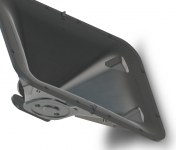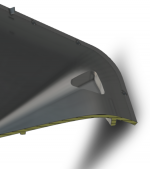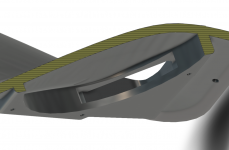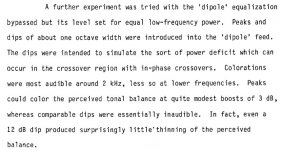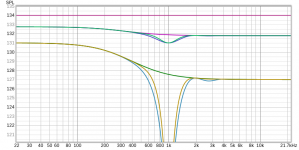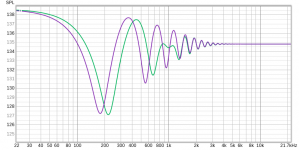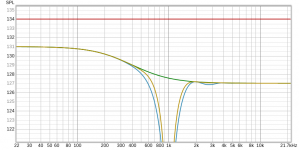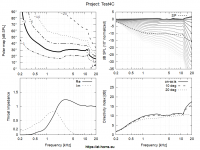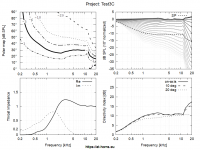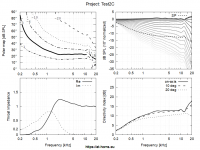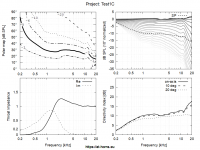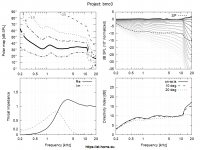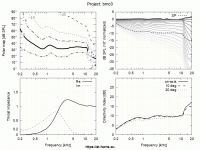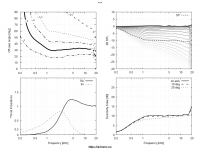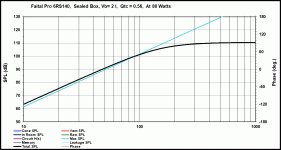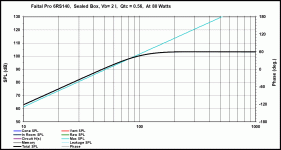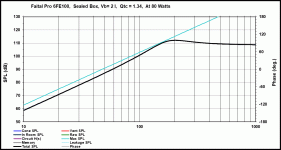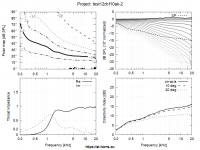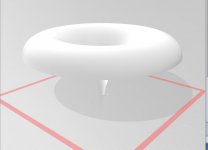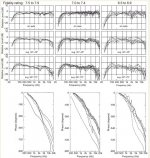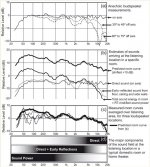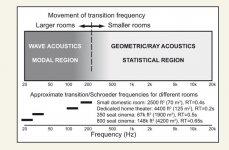aim...the null(s) in other directions than...the first ...reflections?
The first reflections cover a fairly wide spread, from 40 down to 60 up.
If the C to C is not close then at least one null or peak will inevitably be somewhere in that arc.
Which is basically my point.
The Harman Spinorama work has certain anomalies, for instance only horizontal and vertical measurements are taken, for simplicity.
This works fine for a typical, more or less, axisymmetric source but could potentially be "played" if one pushed response problems into the unmeasured areas.
Similarly it would be possible to push some poor performance into unmeasured vertical directions.
I half suspect the JBL M2 may do this to some extent.
It may improve the published numbers but is unlikely to be without some detrimental effect.
Best wishes
David
Even if there was a null in that reflection(s) (and I'm still not sure it is inevitable), audibility of such defect (a spectral hole) is generally pretty low. I simply don't consider this as a major issue - that's the trade-off I'm going to accept. I wouldn't accept the degradation of waveguide performance.
I think about everything you postFrom my experience, a free standing waveguide can be made somewhat smaller compared to a typical "boxed" one. Think about that
Making anything like this without CNC or 3D printing would be a tall order but it could be done. Something very close to Bill's horn could be simulated in Ath quite easily. I made a mockup of a big one for mark100 some time ago. The sides can be flattened over quite a large area when the profile becomes mostly conical. The down side for conventional construction is that the panels are not completely flat. Terminating a flat sided conical horn properly will make it better but it won't come close to what's possible.I've thought that the bwaslo style DIY MEH which is the easiest one to tackle could be built with better mouth with similar effort, only need to simulate how to bend the panels (kerf bending) to get better mouth termination.
What is interesting in Bill's printed MEH is how he has fed the woofers into the horn. It is quite simple but seems to work remarkably well in measurements. This lends itself more to the rectangular nearly flat sided guides but perhaps something similar could be fashioned for a round one. I probably will look further into this. Some screenshots of it attached.
I don't see that speaker as having anything to do with a freestanding guide.The "pile of independent horns" has always looked to me like it would have polars that were also a pile...
of... Hence my scepticism of proposals for a free stand horn.
Anything with spacing more than 1/4 wavelength apart will not sum as a single source. This is a reality for the speaker as I will build it in this incarnation. There will be a vertical split between the woofer and waveguide. This is an arrangement I want to hear and experience for myself.
In a speaker of this size with the crossover being able to be 800Hz possibly down to 500 or 600Hz the requirements are somewhat relaxed and the damage done will be reasonable. I am more concerned about matching horizontal directivity than improving vertical if a choice has to be made.
The best rated speakers in blind listening tests are all vertically split and whilst the coaxial types measure, sum and score better they don't rate better.
There was research done a long time ago by Lipshitz and Vanderkooy
AES E-Library >> Experiments in Direct/Reverberant Ratio Modification
on the effect of directivity changes and holes in the power response from crossover effects. Speaker Dave has cited this research many times and the conclusion is
Given this and the fact the crossover will be in the region between the speaker being in control and the room taking over makes me less concerned than much is being traded away. Time will tell.
Attachments
They won't effect the power response but they will mess up the early reflections response.
The research indicates that this early reflection response is important.
I could be completely wrong since this is mostly just wild speculation on my part, but...
I really doubt that dips in the early vertical reflections are a big problem. Vertical localization is non-existent around the crossover frequency range in question and the reflections are very early. From this, it seems reasonable to conclude that the vertical reflections are perceptually "fused" with the direct sound and not separable by the ear-brain system. So the primary effect of the early vertical reflections is timbre change (this is Toole's conclusion as well, according to his book).
So what degree of spectral coloration can we expect from the crossover null in the floor reflection, for example? I've done some simplistic simulations. First, here are the direct and reflected responses:
Green is coincident, blue and yellow are vertically displaced LR4 and LR6. Reflection delay is 2.6ms for the tweeter. There is 3dB of attenuation for propagation loss and a 4dB shelving filter to simulate the directivity. The floor is assumed to be fully reflective. In the non-coincident examples the woofer leads the tweeter by 0.5ms for perfect cancellation at the crossover frequency. Add the direct and reflected together and you get this:
Purple is coincident and green is LR4. ERB smoothing. The changes in peak/null frequencies makes it harder to distinguish the true difference, so I think a better option is to calculate the RMS average of the direct and reflected responses:
We get a ~1dB dip. In reality, you're unlikely to have full cancellation and the dip will also be partially "filled in" by later reflections. So I'm not convinced that fixing the vertical nulls should be a high priority. Feel free to prove me wrong
Attachments
Even if there was a null in that reflection(s) (and I'm still not sure it is inevitable)
My back of envelope calculations-
Usual recommendation for crossover frequency is when both sources have similar directivity.
Typically this is around where the horn is λ across and the woofer too.
So a C to C of λ is about the minimum for the obvious layout, use it for simplicity and assume on axis is in phase summation (Linkwitz Riley for example.)
With two sources of same output and λ apart we have a classic interference null at + and - 30 from the on axis.
This is within the limits of the forward directions that are considered by the Spinorama preference score but not in the main window so not very emphasised.
That makes sense to me, such speakers can sound excellent but can perhaps be improved.
audibility...is...pretty low. I simply don't consider this as a major issue
Yes, it's not within the main window so audibility should be lower and not a major issue.
But if it could be moved out of the forward window then it wouldn't be even a minor issue.
I certainly wouldn't put noticeable ripple in the main window to remove a small dip in the forward window.
But equally I won't worry about small ripples in the main window to the complete exclusion of cancellation dips in the forward.
I will have to look more carefully at the Harman "Preference Score" to see what they found as a balanced trade-off.
Best wishes
David
...This is a reality for the speaker as I will build it in this incarnation.
Like you, I am constrained by the speakers I already have for my current project, also IIRC similar to yours - 1.5" compression drivers and efficient 15" woofers.
In a speaker of this size with the crossover..800Hz possibly down to 500 or 600Hz the requirements are somewhat relaxed...
I am more concerned about...horizontal directivity than...vertical if a choice has to be made.
I use a nominal baseline of 666 Hz, it seems appropriate for such a loudspeaker.
And yes, I am more concerned about horizontal too.
But my idea was that for a vertically stacked system a reduction in C to C should help the vertical with minimal impact on the horizontal so it's not a choice that has to be made.
The best rated speakers in blind...tests are all vertically split and whilst the coaxial types measure, sum and score better they don't rate better.
Nice news for a vertical speaker owners.
What tests were these?
...makes me less concerned..Time will tell.
Yes, as replied to Marcel, I do see this as incremental improvements rather than a major concern.
The only decision I have left is between the classic vertical stacked horn plus woofer, or some sort of MEH or perhaps Bill Waslo'ish slot system.
Thanks for the pics and ideas.
...since this is mostly just wild speculation on my part, but...
Thank you, that's a bit to think about, a proper response may take a while.
Best wishes
David
Last edited:
I think we are all agreed that reducing the distance is a good goal so long as nothing else is compromised significantly to get there.But my idea was that for a vertically stacked system a reduction in C to C should help the vertical with minimal impact on the horizontal so it's not a choice that has to be made.
The Harman blind listening tests, the Salon 2 is still the preferred speaker to my knowledge of all those tested and the M2 is very close but appeals to a different audience. They both fall in the statistically difficult to separate category of the top performers.Nice news for a vertical speaker owners.
What tests were these?
Bill's method is simpler than I thought so I too am giving greater consideration to that as another option in the future.The only decision I have left is between the classic vertical stacked horn plus woofer, or some sort of MEH or perhaps Bill Waslo'ish slot system.
Thanks for the pics and ideas.
I don't really understand the fascination with the preference score. The basic tenets of the research were obvious before the metric and the score is not to be taken literally from my reading of it. Seems to be a simple way to know if you are in the ball park rather than a target. The Salon 2 does not score awesomely well but it is still widely considered their best speaker.I will have to look more carefully at the Harman "Preference Score" to see what they found as a balanced trade-off.
Yeah the vertical nulls probably affects more to the localization or other qualities of the speaker than listening window sound or frequency response or how to describe it, I don't know if it is an issue, maybe not but still  Listening distance would affect.
Listening distance would affect.
A MEH would allow a bigger waveguide that could control directivity down to Schroeder frequency and as point source wouldn't care much about listening distance. If there wasn't any reflections and diffraction at the speaker nor too much off-axis anomalies I'd guess the speaker disappears completely localization wise. But as said it is much more work to design and fabricate. Still I think it is the ultimate sound radiating physical object one can make with controlled directivity. At least there is the promise since more compromises seem to be in favor of audio and the trade offs are in time, money and size. Never heard one and my stacked multi-way sounds good so, just speculating Carry on
Carry on
A MEH would allow a bigger waveguide that could control directivity down to Schroeder frequency and as point source wouldn't care much about listening distance. If there wasn't any reflections and diffraction at the speaker nor too much off-axis anomalies I'd guess the speaker disappears completely localization wise. But as said it is much more work to design and fabricate. Still I think it is the ultimate sound radiating physical object one can make with controlled directivity. At least there is the promise since more compromises seem to be in favor of audio and the trade offs are in time, money and size. Never heard one and my stacked multi-way sounds good so, just speculating
Last edited:
I have been getting to grips with the 4.7 version of Ath trying to design a freestanding guide.
This one from mabat is my target (it is a 1" guide where I will be using 1.4"). Of all the options I have seen this to me seems optimal.

I've developed four pretty decent options, all different. Sadly combining the best parts in one seems like a tall order and after 100 or so simulation runs I'm getting burned out trying.
I've run my best effort from bmc0's code through Ath to generate the same report to compare.
I have attached a slowed down gif and separate files for those who like to see either.
The directivity is very constant with bmc0's it's much bigger and I didn't notice the 1200Hz bump as much when simulating to 600Hz. Test2 has smooth curves but is a 60deg window, Test4 is perhaps the closest to what I want. What I like in all of them is that the directivity gives up gently and doesn't just fall in a heap.
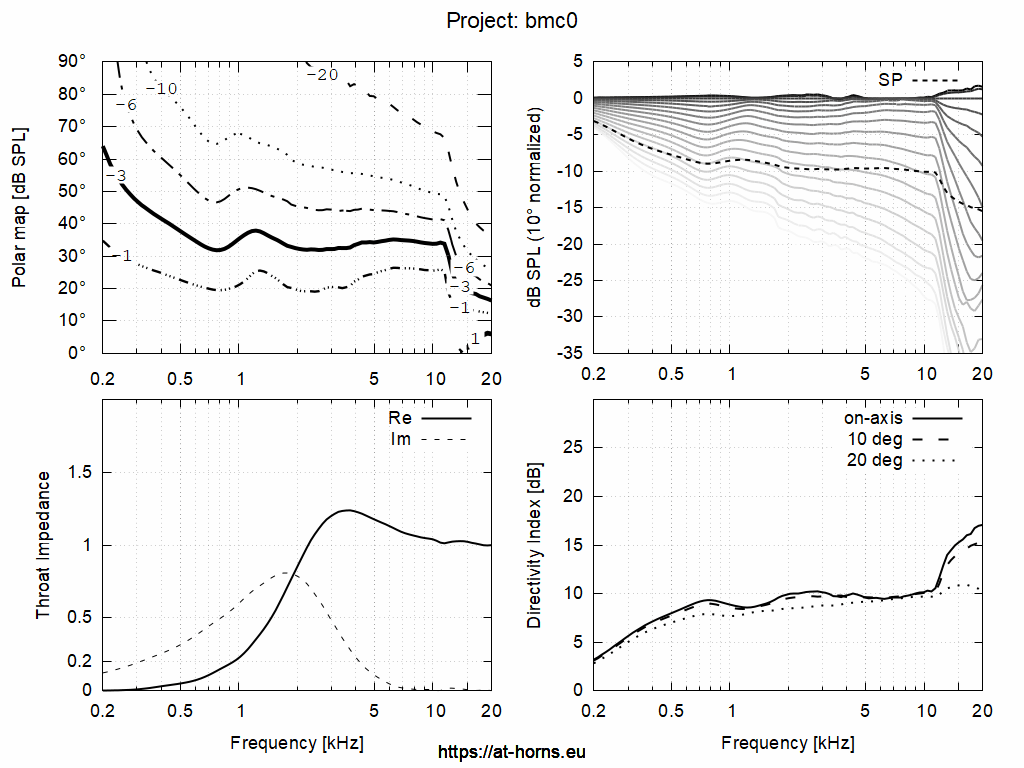
This one from mabat is my target (it is a 1" guide where I will be using 1.4"). Of all the options I have seen this to me seems optimal.
I've developed four pretty decent options, all different. Sadly combining the best parts in one seems like a tall order and after 100 or so simulation runs I'm getting burned out trying.
I've run my best effort from bmc0's code through Ath to generate the same report to compare.
I have attached a slowed down gif and separate files for those who like to see either.
The directivity is very constant with bmc0's it's much bigger and I didn't notice the 1200Hz bump as much when simulating to 600Hz. Test2 has smooth curves but is a 60deg window, Test4 is perhaps the closest to what I want. What I like in all of them is that the directivity gives up gently and doesn't just fall in a heap.
Attachments
For the MEH fans here is a Faital 6RS140 woofer in a 2 litre box which seems like it could be constructed as part of the back of the waveguide. Relatively simple cone shape to model.

and again with a little bit of Flattening EQ
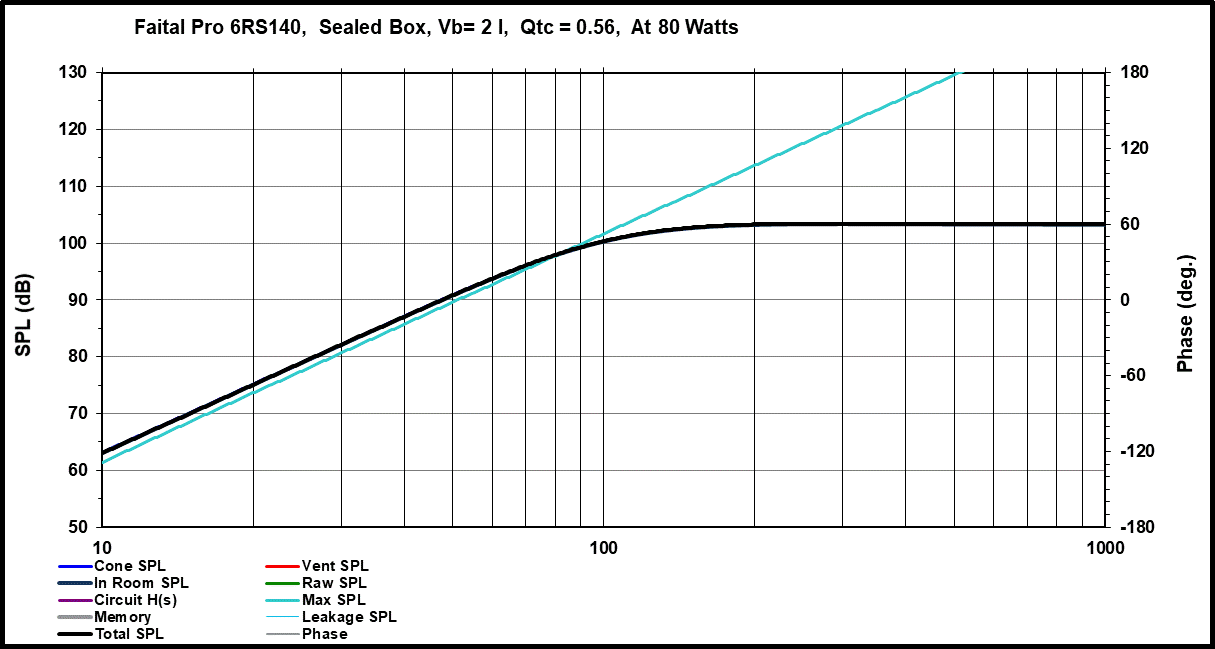
and again with a little bit of Flattening EQ
Attachments
Well, I'm a Synergy fan....
for 1/3rd the price, you could get Faital 6FE100, which has roughly the same volume displacement and includes a shorting ring also, and a 61 Hz Fs. I haven't used the 6FE100 but I did use its little brother the 4FE35 in my synergies and can recommend it based on that. 4 of those 4" drivers will get you to 110 db with -3db high pass at 100 Hz. I think multiple small apertures in the waveguide are less disruptive of pattern than one or two large ones.
The 6RS140 has almost 2x the BL, which makes it a better horn driver than the lower end drivers, but not 3x better!
for 1/3rd the price, you could get Faital 6FE100, which has roughly the same volume displacement and includes a shorting ring also, and a 61 Hz Fs. I haven't used the 6FE100 but I did use its little brother the 4FE35 in my synergies and can recommend it based on that. 4 of those 4" drivers will get you to 110 db with -3db high pass at 100 Hz. I think multiple small apertures in the waveguide are less disruptive of pattern than one or two large ones.
The 6RS140 has almost 2x the BL, which makes it a better horn driver than the lower end drivers, but not 3x better!
True but it doesn't like such a small enclosure. It's Vab is 22 Litres instead of 1.36. This is the response in the same box volume as before. That is the reason the 6RS140 is interesting, pretty flat in a very small box.for 1/3rd the price, you could get Faital 6FE100, which has roughly the same volume displacement and includes a shorting ring also, and a 61 Hz Fs.
Very true and also another good option, B&C have a decent 4" driver too.I did use its little brother the 4FE35 in my synergies and can recommend it based on that. 4 of those 4" drivers will get you to 110 db with -3db high pass at 100 Hz. I think multiple small apertures in the waveguide are less disruptive of pattern than one or two large ones.
Attachments
...
I've developed four pretty decent options, all different. Sadly combining the best parts in one seems like a tall order and after 100 or so simulation runs I'm getting burned out trying.
...
Hahaa yes Mabats iterations must count in thousands
Attachments
That is true and I noticed it but it may not matter. Low end response is determined solely by volume displacement. Box size relative to Vab determines how much equalization it takes to get there. Since its bandpass, you are going to be equalizing anyway. Depends on whether you enclose the entire back side of the horn or just put small caps over each midwoofer.
Re B&C 4NDF34
Re B&C 4NDF34
Pure luckHahaa yes Mabats iterations must count in thousands
the fact the crossover will be...between the speaker... in control and the room...
At what point do you consider the room "in control"?
I understand the Schroeder Frequency is typically ~ 150 Hz in a domestic room?
And the transition is considered to extend over ~ 2 octaves.
So even a 600 Hz crossover isn't in the transition, if I understand correctly.
The Harman...tests
I know that Harman had done tests of the Revel and M2 but didn't know they had compared it to "coaxial types [that] measure, sum and score better they don't rate better.''
Which coaxial types were these? Or is there a reference or link?
I don't really understand the fascination with the preference score. The basic tenets of the research were obvious before the metric...
I don't think a couple of mentions quite rates as "fascination"
In the thread I started at ASR to discuss errors in the CEA Spinorama standard I even covered what I think are conceptual problems with the work.
So, sure, I don't consider it holy writ - just indicative.
But it is the best and most up to date work I know on how the direct and reflected sound factor in the overall sound quality.
So that's where I will start unless anyone knows better data?
Best wishes
David
Brute force termination, go big or go homeEnded up with huge round over to get smoothest but still not as smooth as mabats and he seems to get away with smaller roundover :O 1" throat, 20" mouth. I'm trying to fit an 8" driver on the side.
I'm trying to avoid making things that will force me to active as my only option. If there are other options I'm more open to them than I would have been before. With a freestanding horn I would want caps, for a full enclosure I would go rectangular.Since its bandpass, you are going to be equalizing anyway. Depends on whether you enclose the entire back side of the horn or just put small caps over each midwoofer.
Re B&C 4NDF34
Hahaa yes Mabats iterations must count in thousandsSpent many hours yesterday trying to figure out what kind of things affect the different features. Ended up with huge round over to get smoothest but still not as smooth as mabats and he seems to get away with smaller roundover :O 1" throat, 20" mouth. I'm trying to fit an 8" driver on the side.
Your WG seems deeper?
//
I didn't want to open up a can of worms here but in being too brief maybe I wasn't clear.At what point do you consider the room "in control"?
I understand the Schroeder Frequency is typically ~ 150 Hz in a domestic room?
And the transition is considered to extend over ~ 2 octaves.
So even a 600 Hz crossover isn't in the transition, if I understand correctly.
The Schroeder Frequency doesn't apply in small rooms but the idea behind it is still applicable. When the room is in control the modes are dominant, when the speaker is in control ray acoustics has taken over and in between there is the transition region.
This is good graph Fig 6.1 from Sound Reproduction 3rd Edition Floyd Toole
Fig 5.4 Is another good example comparing anechoic to in room results. Above 1K anechoic and early reflections dominate, then things start to get messier until by 200Hz modes seem to dominate.
When you measure speakers in rooms you start to see certain patterns particularly when you take spatially averaged measurements. Every room is different and the frequencies will change but the basic premise holds true.
Sorry I haven't got any links, the information is spread widely in snippets and not easy to find again.I know that Harman had done tests of the Revel and M2 but didn't know they had compared it to "coaxial types [that] measure, sum and score better they don't rate better.''
Which coaxial types were these? Or is there a reference or link?
Fig 5.2 shows some measurements of speakers with different fidelity ratings. The better ones are more consistent on and off axis, crossover dips didn't stop them being highly rated.
The fascination was not meant to refer to your mention of it in this threadI don't think a couple of mentions quite rates as "fascination"
It is a statistical distillation of recurrent factors that influence blind preference. As such it is incredibly useful.In the thread I started at ASR to discuss errors in the CEA Spinorama standard I even covered what I think are conceptual problems with the work.
So, sure, I don't consider it holy writ - just indicative.
But it is the best and most up to date work I know on how the direct and reflected sound factor in the overall sound quality.
So that's where I will start unless anyone knows better data?
Right and wrong seems to be universal in blind testing. The best and worst can be separated easily. Better and best often comes down to personal preference, so beyond the main factors personal trials seem to be needed to decide for yourself.
I could easily be convinced from reading that wide directivity and lateral reflections are the way to go. With the right type of music I agree, but overall I prefer reduced reflections or narrower directivity.
Attachments
- Home
- Loudspeakers
- Multi-Way
- 2 way waveguide speaker build ABEC modelling
